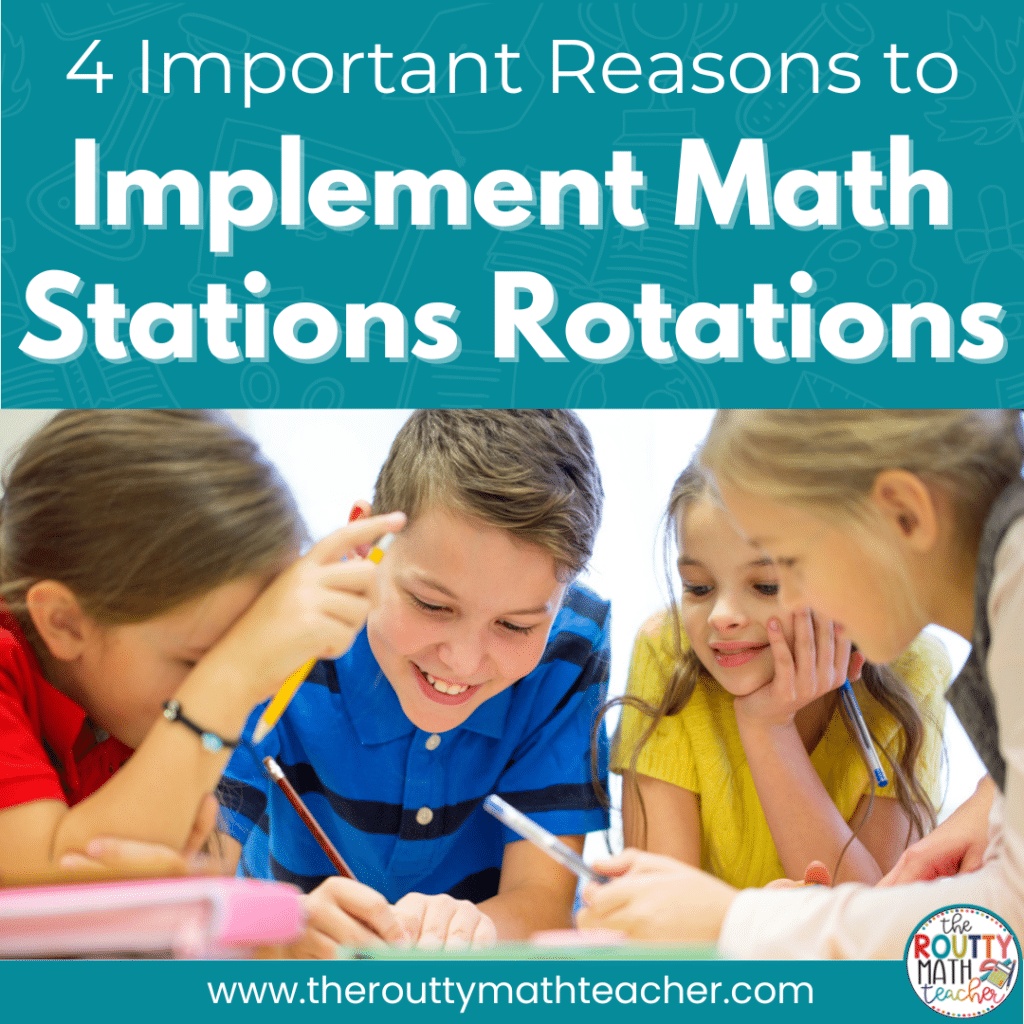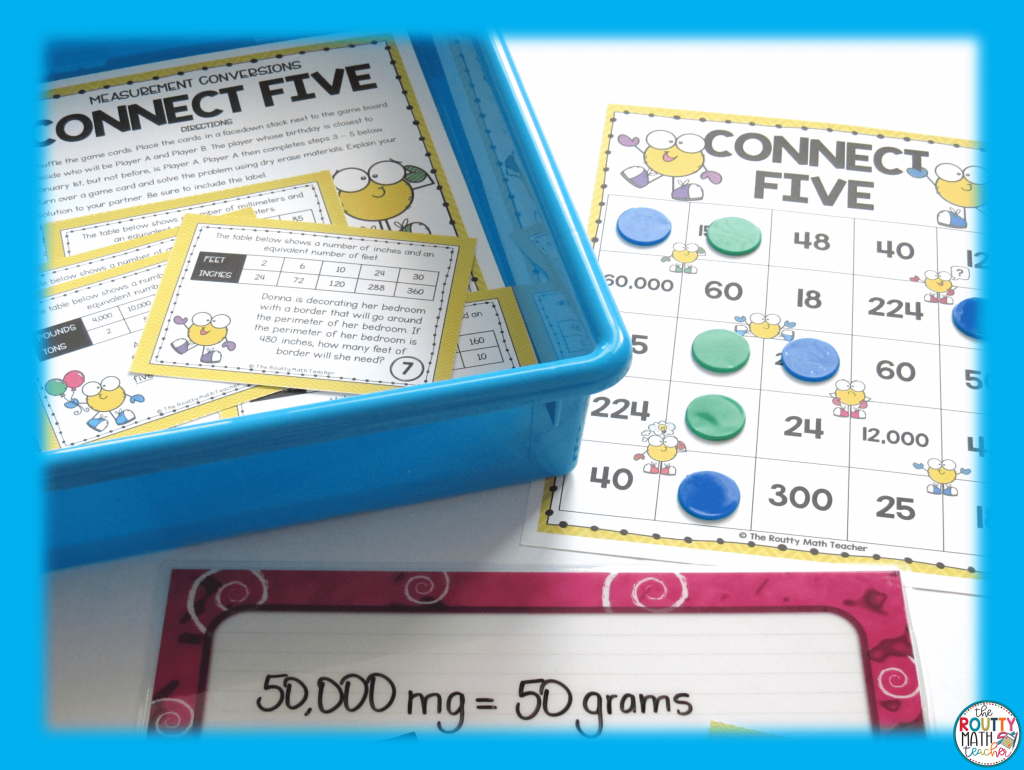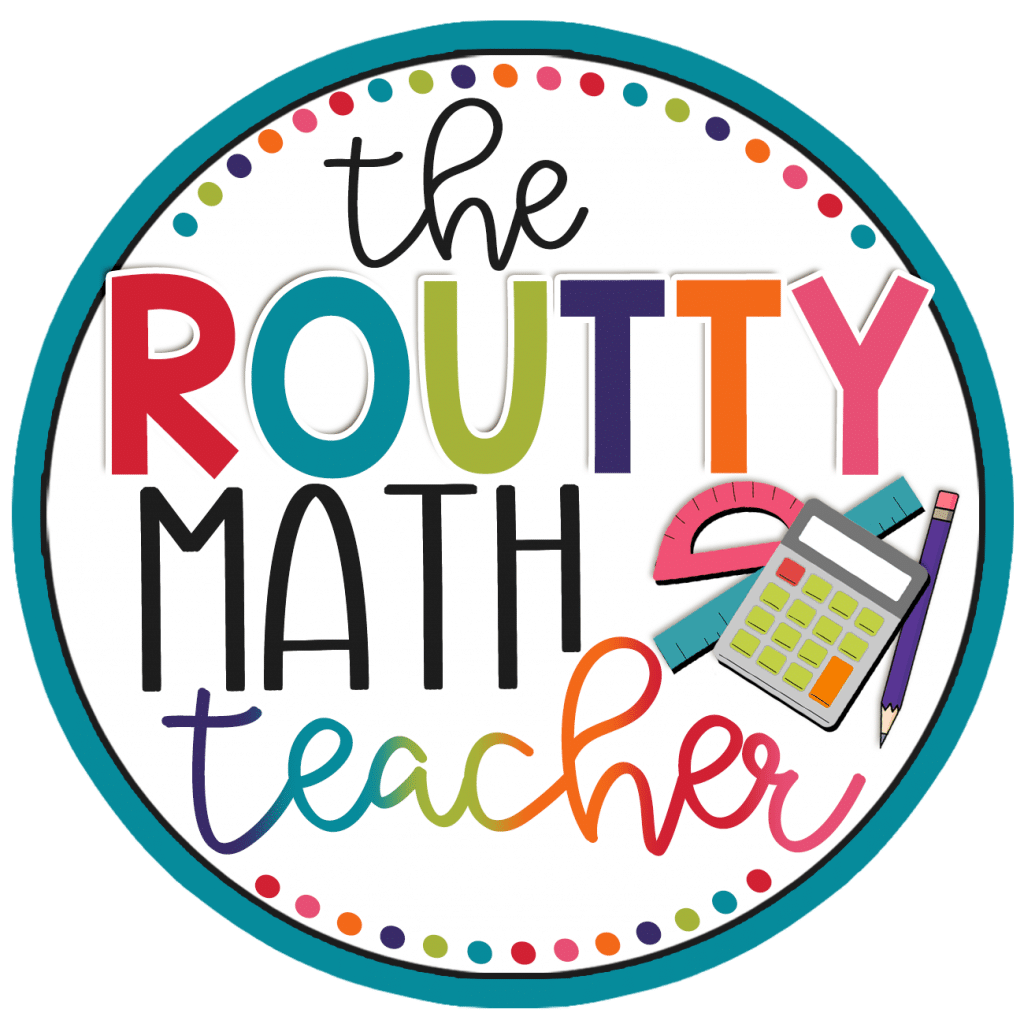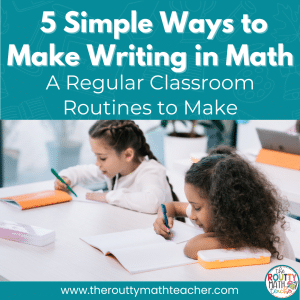No products in the cart.
Math Station Rotations: 4 Reasons

One of my favorite classroom routines is math stations! Over the years, they have become a staple instructional strategy for me and I utilize them often. I love using math station rotations with my students. In this post, I share four reasons to implement math stations in your classroom.
My love for math stations started with a need to keep my students engaged during math class. I loved the idea of having students complete a variety of fun activities that would help them practice and extend their learning through fun and challenging activities.
My students loved the opportunity to learn and collaborate with their classmates without sitting at their desks listening to me move through the traditional lesson cycle.
What are Math Station Rotations?
Math station rotations include a set of three to six activities students complete individually or in small groups. Students rotate through the activities in 15-25 minute intervals of time. Station activities can include independent tasks, such as products and assignments listed on a math menu, or cooperative learning activities such as games, problem-solving and critical thinking challenges, task cards, self-checking activities, or computer games.
Typically, stations review recently-taught math content; however, I have used math station rotations to provide multiple opportunities to practice a skill on which we were currently working. I also use math stations as a spiral review when we prepare for our state test. I even use math stations to teach new content when I am short on time and need to both review old skills and teach new skills at the same time.

Why Do We Need Math Station Rotations?
Besides the fact that math stations are the ultimate student engagement tool, there are four reasons to implement math station rotations in your classroom.
1. Provide multiple learning experiences at one time
Math stations provide multiple learning experiences to help students be successful with grade-level content and skills. Because the general station rotation has three or more station tasks, students will have multiple opportunities to work with the skill and demonstrate mastery.
Math station tasks vary the level of student need. Tasks may include basic practice, advanced practice, real-world connections, and critical thinking challenges. For example, station activities for students working on volume of three-dimensional figures may include:
- finding the volume of rectangular prisms labeled with the dimensions or where the unit cubes are visible
- solving real-world volume problems
- solving challenge problems, such as those where we know the volume and the area of the base but the height is unknown
- guided intervention task or an additional challenge such as building figures with a specific volume and/or dimensions.
2. Address multiple learning styles
There are many ways to address learning styles through math station rotations. When used in this way, there is always an activity that appeals to each student’s learning needs. For example, a rotation may include:
- an activity sheet where students use a set of manipulatives to complete the task
- a math audiobook where students listen to a story and complete an activity page to emphasize the math skill from the story
- an internet game or iPad app to review a skill
- an activity where students create a product and have some choice in how they complete the task
3. Differentiate tasks for ability levels
With a variety of ability levels in every classroom, differentiating for students’ needs can be quite the challenge. With a station rotation, differentiated tasks meet a variety of needs.
For example, I can include leveled tasks for each station, such as word problems that require only one step to solve for students who are still working toward mastery and two-step word problems for students who have already demonstrated mastery.
Certain groups complete a specific task or students have the option to select a task that meets their needs and ability level.
4. Develop cooperative learning skills
Station rotations designed to include cooperative learning tasks that require students to work together to complete a task are ideal for building communication skills. During this time, students must also self-monitor their progress and behavior.
For cooperative learning tasks, assigning roles helps students have a level of accountability when completing the task. Students also work together to address concerns when questions arise. This way, students are not only responsible for the learning of the group but for their own learning as well.
Math Station Basics
There are a few basic tools I recommend you use to get started.
First, I recommend creating a math station rotation board to organize your rotation plan and communicate the rotation order and math station activities to students. A rotation board can be created using paper materials or digital tools.
Second, I recommend using editable game templates to quickly create games to use during math stations. I started using these a few years back and they have made creating computational games super simple.
Next Steps
Like any effective routine, students must understand the expectations and have an opportunity to practice the routines. Once students understand how to perform the routine successfully, with a few gentle reminders from time to time, math station rotations will become your favorite part of the school day.
Ready to get started? Download my Getting Started with Math Station eBook using the form below.
And, be sure to check out these blog posts to help you get started using math stations in your classroom.
- The Five Proven Secrets Every Teacher Needs to Know to Create Effective Math Stations
- How to Set Up Small Group Math Instruction in Three Easy Steps
- Four Simple and Time-Saving Hacks for Organizing Math Stations
- Three Easy Math Station Games Every Teacher Should Use
- Three Quick and Easy Ways to Assess Math Stations
Sound Off!
What do you enjoy most about using math station rotations? Respond in the comments below.





